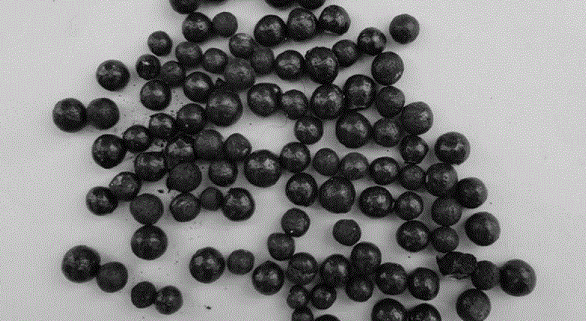With the improvement of the living standards of our residents and the development of urban economy, the construction of urban sewage treatment equipment in China has been continuously strengthened, and a large amount of sludge will be produced in the sewage treatment process. The composition of the sludge is extremely complex, and it is bulky, fragile, unstable, and stinky. If these sludges are not treated in a timely and effective manner, they will bring serious pollution problems to the environment. In particular, the treatment of heavy metals in municipal sludge has become a major problem in sludge reuse.
First, how to deal with urban sludge?
At present, there are three main treatment methods for municipal sludge:
1. Incineration sludge treatment
Incineration sludge treatment is to incinerate sludge on a professional production line, which will pollute the atmosphere and consume a lot of energy;
2. Landfill sludge treatment
Landfill treatment sludge is to directly fill the dewatered sludge at a designated location, but the leakage of harmful components inside it will pollute the groundwater, and the waste gas generated by landfill will cause air pollution;
3. Sludge agricultural compost
Sludge agricultural composting is because there are a large number of biological compounds and organic matter that can be used as fertilizers in urban sludge, which can improve soil fertility, but heavy metal pollution is difficult to remove, which is the main obstacle for sludge agricultural composting.
Continue to use the existing method to treat sludge, which not only occupies a large amount of land, but also causes soil and groundwater pollution. Therefore, how to find a more effective sludge treatment method and achieve the goal of stabilization, resource utilization and harmlessness It has become a very urgent task.
The use of dehydrated municipal sludge to solidify heavy metals to prepare high-strength ceramsite provides a good solution for the safe application of sludge treatment end products. It not only solves the problem of stacking a large number of dewatered sludge, but also avoids the secondary damage caused by improper discharge. Pollution. Moreover, ceramsite as a lightweight aggregate can not only be used in basic buildings, but also alleviate the crisis of building materials such as sand and stone. It provides a new channel for the building materials industry to dispose of municipal sludge, and also responds to the current trend of resource utilization in the country. , the country and the people.
Second, the process of preparing high-strength ceramsite by solidifying heavy metals from municipal sludge
1. Ingredients: Mix dehydrated municipal sludge, saline soil, plasticizer and water in a certain proportion and stir evenly;
2. Granulation: the mixture is placed in a granulator to be granulated, and the particles are spherical or elliptical;
3. Drying: the granulated granules are placed in a drying device for drying;
4. Calcination: The dried granules are sintered in a high-temperature calcining apparatus to obtain ceramsite.
Third, the advantages of using municipal sludge to solidify heavy metals to prepare high-strength ceramsite
1. Municipal sludge solidified heavy metal The main raw material for the preparation of high-strength ceramsite dehydrated municipal sludge and saline soil are solid waste, which not only solves the problem of stacking existing large amounts of sludge, but also avoids the environmental pollution caused by improper discharge. Secondary pollution, and the realization of the harmless and resource-based treatment of solid waste, reducing waste of resources, and achieving safe disposal of municipal sludge. At the same time, it is economically and feasible to use urban sludge to prepare high-strength ceramsite products. The obtained ceramsite can solidify the heavy metals contained in the raw materials, which is beneficial to resource recycling and environmental protection, and also reduces the ceramsite industry. The demand for natural raw materials;
2. The ceramsite prepared by this method not only has good structural strength, low water absorption, high hardness and good chemical stability, but also has an enamel layer or glass body covering on the surface of the ceramsite, which greatly enhances the curing ability of heavy metals in the sludge. Because the urban sludge high-strength ceramsite has the advantages of light weight, high strength, durability and good solid metal curing effect, it can be used for lightweight building components or thermal insulation materials, and the characteristics of urban sludge high-strength ceramsite are in line with modern architecture. The need of the industry, the material instead of sand and gravel as the aggregate in lightweight concrete, greatly ease the pressure of natural aggregates;
3. According to the rotary ceramsite carbonization preparation method developed by Luoyang Building Material and Architectural Design and Research Institute, the mechanical strength and heavy metal pollution index meet the requirements of national construction high-strength light aggregate, and the heavy metal content far meets the hazardous waste identification standards and Hazardous waste landfill standards have also developed positive and feasible channels for the resource utilization of municipal sludge.
In December 2018, Luoyang Building Material and Architectural Design and Research Institute independently developed and designed, providing core equipment for sludge hydrolysis and carbonization resource utilization comprehensive utilization project, which was put into operation in Huzhou City, Taihu Lake, with an annual processing capacity of 66,000 tons of water-containing sludge. The sludge ceramsite is 29,800 tons. The project is a demonstration project for the “13th Five-Year” National Sewage Special Treatment Sludge Resource Utilization, which has received extensive attention from governments at all levels and provided advanced solutions for environmental management in the Taihu Basin.




